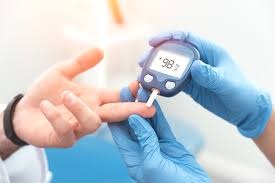
Borderline diabetes, also known as prediabetes, refers to a condition where blood sugar levels are elevated but not high enough to be diagnosed as type 2 diabetes. It is medically referred to as impaired fasting glucose or glucose intolerance.
What Happens in the Prediabetes Phase?
During this phase:
The pancreas continues to produce insulin in response to carbohydrate intake.
The body becomes insulin resistant, meaning insulin is less effective in managing blood sugar.
As a result, glucose levels remain higher than normal.
Prediabetes vs Diabetes
According to Dr. Imran Ahmed:
Having prediabetes doesn’t mean you will definitely develop type 2 diabetes.
However, it significantly increases the risk—5 to 15 times more than those with normal glucose levels.
Without changes in diet and lifestyle, the likelihood of progressing to diabetes rises sharply.
Early Symptoms May Go Unnoticed
Only around 10% of people with prediabetes are aware they have it.
Most individuals do not experience noticeable symptoms in the early stages.
This makes early detection through routine health checks extremely important.
Risk Factors to Watch For
If you recognize any of the following, it's advised to check your blood sugar levels promptly:
Excess body weight or obesity
Physical inactivity
High blood pressure
High cholesterol levels
Family history of type 2 diabetes
History of giving birth to a baby over 9 pounds (4.08 kg)
Health Complications Linked to Borderline Diabetes
If left unmanaged, prediabetes can eventually lead to:
Decreased vision
Nerve damage
Kidney damage
Heart disease

 Share
Share



